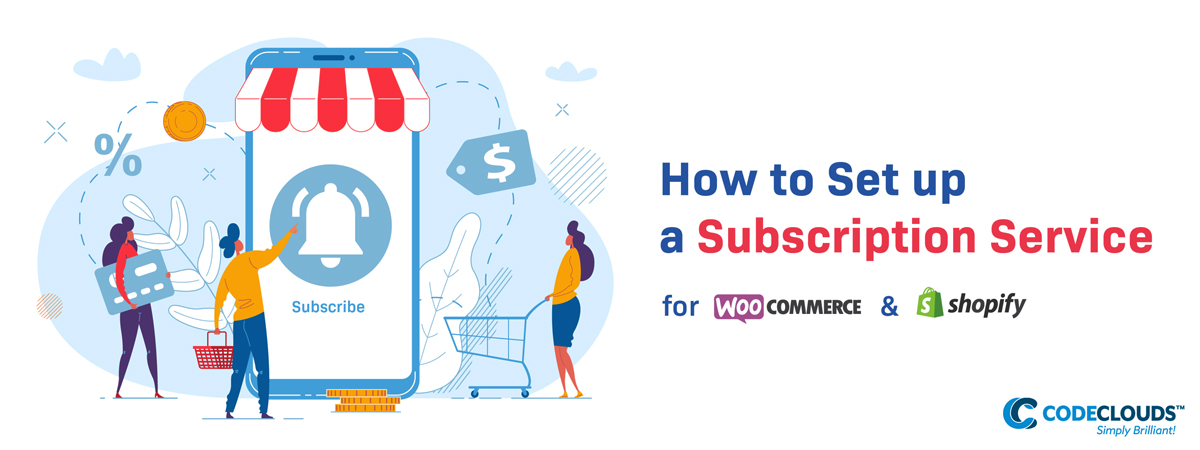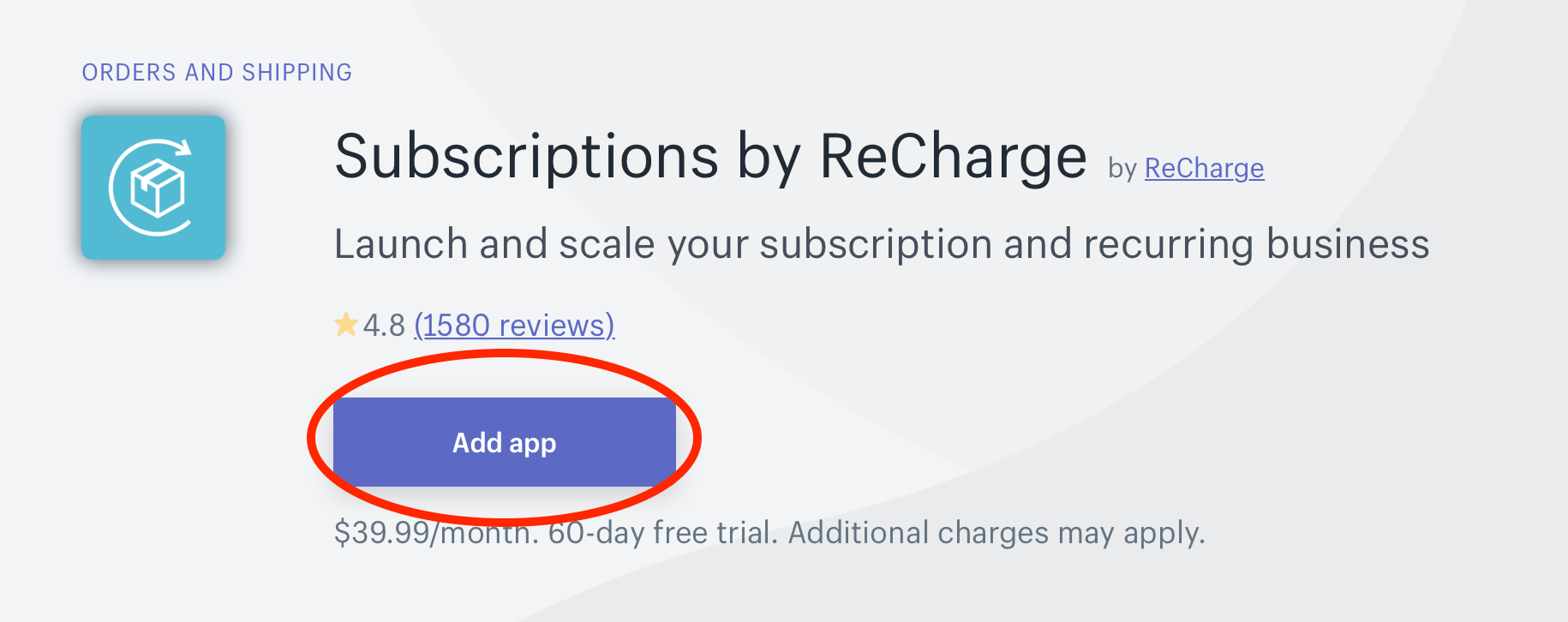Overview
WooCommerce and Shopify are two of the largest eCommerce CMSs out there—if you’re a new store owner, understanding them is crucial to getting your business off the ground. Today we’re breaking down how to get the most out of them when running a subscription service or subscription box.
ECommerce store owners all over the world are transitioning to subscription services, and it’s not hard to see why—compared to the turbulent overheads you get from a standard storefront a subscription service provides a reliable baseline income that your one-off sales can supplement. It’s a much more stable business model, and it holds an undeniable attraction for store owners who are sick of fluctuating end-of-month reports.

Today we’re going to be going over how you can set up a subscription service in WooCommerce and Shopify.
WooCommerce
The official WooCommerce subscription plugin is a pricey option, but definitely has the most coverage. It’s definitely more affordable if you’re buying the 25 site package, but in my experience, a vast majority of owners are only buying it for a single site. Do be aware, it’s not quite as expensive as it looks—they don’t advertise enough, but that’s $200/year, not $200/month. If you’ve got $17/month to spare, it’s definitely worth a look.

If it’s starting to sound like this involves buying a whole lot of plugins, then … yep, correct. A skilled PHP development team can make their own custom plugins, but your average store owner isn’t a max-level ZendPHP Wizard, and is probably just going to need to drop some cash to go third-party.
Once that’s set up, you’ve got subscriptions running, which is enough for most of you, but what if you want to run a subscription box? They’re becoming increasingly popular; users receive a box of random (but themed) items every month, and a big part of the appeal is not knowing what you’re going to get. Most of you will probably be familiar with food delivery subscription boxes like Blue Apron, but niche product boxes like LootCrate have really taken off in the last few years. For that, you’re going to want the Product Bundles plugin. It integrates with the official subscription plugin. All you need to do is choose products from your existing ranges, and you can bundle them together and send them out.
If you want to convert your existing products into subscriptions, you’re going to need to buy an additional plugin: All Products for Woocommerce Subscriptions. You can also do this manually for free, though it’s a little time-consuming if you’ve got a larger store—go to WooCommerce > Products, find the product in question, then go find the Product Data menu, where you’ll now find a Subscription option you can change to. You can configure each item from that menu, and you’ll need to do it individually for each item in the store you want to change over.
If it’s starting to sound like this involves buying a whole lot of plugins, then … yep, correct. A skilled PHP developer can make their own custom plugins, but your average store owner isn’t a max-level ZendPHP Wizard, and is probably just going to need to drop some cash to go third-party.
We’ve talked about WooCommerce vs Shopify before, but the general rule is this: WooCommerce is cheaper and more customizable, but is less stable and more finicky. If you’re techy you can get a lot out of it, but it definitely has less safety railings than the competition. If you feel confident running WordPress behind the scenes then you should be fine, but if you’re a relative newcomer or just somebody who doesn’t want to be constantly wrangling the tech, you’re going to want to look to:
Shopify
Shopify has a lot more plugin options, but the top three are reCharge, Bold Subscriptions, and Recurring Order & Subscription. They all charge monthly, $40, $30, and $16 respectively. Shopify has always been more expensive than WooCommerce, so that’s hardly a surprise—you’re paying for hosting and better management and support, but you’re also still paying and it can be the difference between a month in the red and a month in the black. They all work slightly differently, but they’re also fairly straightforward. Adding plugins to Shopify is usually just a matter of:
- Log in to your Shopify store
- Click ‘Add App’

- Follow the app’s install instructions
Shopify is less hands-on across the board—it’s designed for mom and pop store owners who don’t really have access to tech support. It’s extremely complex under the hood (it uses its own proprietary templating language called Liquid, which requires a specialist), but that’s all to power the WYSIWYG frontend tools that make site design a breeze. We do shopify checkout page design jobs at CodeClouds, but it tends to be more boutique, for if you want to really stand out.
The CRM Solution
What if you need a more full featured CRM solution than Shopify offers to support your subscription business? We’ve developed the Unify Platform for just this purpose. With Unify, you can link a Shopify store to LimeLight or Konnektive CRM with support for eCommerce Custom Checkout and post purchase upsell.
If you set up Unify Platform, on top of CRM integration, you’ll get features like support tickets and tracking, and you give your customers (and yourself!) the ability to pause, cancel, or modify their subscriptions, as well as skip subscription cycles without cancelling through the included membership portal. Unify Pro supports both WooCommerce and Shopify.
Some General Subscription Service Tips
- You’re usually going to want to make subscription items a little cheaper than if you were selling one-offs—it’s a great incentive for customers to go monthly, and the reliability will more than make up for it regarding overheads.
- Not every customer is interested in a subscription: if you’ve ever worked retail, you’ve probably seen customers who charge in looking for a single specific item, and only buy that. They’re rarely interested in upsells, loyalty cards, or extra merch. My advice is to remember them, and be ready to cater for them, which leads on to my next point;
- The reliability of subscription models is great, but it often means losing out on the dynamism of one-off sales: you rarely get a big bumper day with 1000 new subscriptions, but sometimes a celebrity will mention a 1-off product and send people scrambling for your store. I’ve found it’s best to have both—run a subscription service to give you that stable income baseline, but have plenty of regular products for customers who aren’t ready to sign on fully.
- Remember Cialdini’s Principles of Persuasion: reciprocity, consistency, liking, authority, scarcity and social proof are some of the most powerful tools in your eCommerce arsenal, and they apply doubly for subscriptions—you’re not just asking for a purchase, you’re asking for a commitment.
- Boxes need a niche, and there are fewer and fewer niches these days. Bigger boxes like Loot Crate can get away with broader niches like “nerd things”, but the space for going that broad is disappearing.
Have a lovely day out there, and stay brilliant.
Share this article
846 reads
Similar Reads








